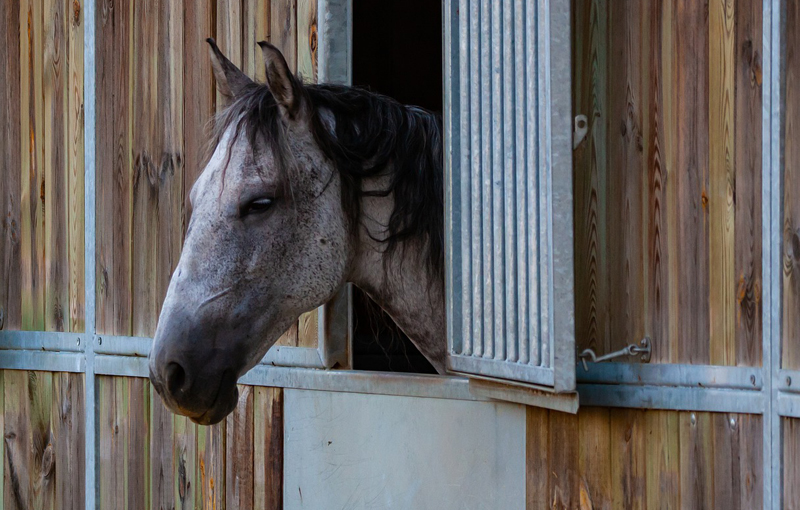In April 2015, a police horse from the city of Vitoria, located over 500 kilometres from Rio, was diagnosed with glanders. This horse had left the Army Equestrian School in Deodoro ‒ site of the Olympic Equestrian venue ‒ in November, 2014, having previously tested negative to glanders three times. As this horse had resided in the army stables six months previously, the State of Rio de Janeiro Agriculture Department tested all 141 horses that had also been resident in these stables as a precaution. One horse tested positive to glanders at the end of June, despite displaying no clinical signs of the disease. Test results from a second horse were inconclusive. Both these horses were immediately isolated and removed to a Brazilian Ministry of Agriculture, Livestock and Supply (MAPA) quarantine facility in Sao Paolo, 684 km from Rio.
As a precaution, all army horses in the Deodoro neighbourhood continue to undergo further testing and samples are being sent to both the laboratory in Brazil and the OIE (World Organisation for Animal Health) laboratory in Germany. MAPA is confident that there is no threat to the horses that will compete in the “Aquece Rio” Test Event, August 6-9, 2015.
What is glanders?
Glanders is caused by the bacterium Burkholderia mallei in horses, donkeys, and mules and is highly contagious in equines in close contact. The most common source of infection is ingestion of contaminated food or water. Other sources of infection include aerosol transmission (over very limited distances, unlike the flu) and shared equipment, e.g. grooming supplies, tack, etc. Glanders bacteria can also enter the body through skin lesions/abrasions or mucosa.
Glanders causes nodules and ulcerations in the nasal passages, respiratory tract, or skin, which secrete sticky discharges that can infect other animals. The average incubation period is 2-6 weeks after exposure. The bacteria is inactivated by heat and sunlight, and prolonged in wet or humid conditions. It was reported to survive for up to six weeks in some infected stables, and one report suggested that it might remain viable in room-temperature water for up to 100 days. Under most conditions, however, it is not likely to survive in the environment for more than two weeks.
Some animals suffer a chronic form of the disease and can be asymptomatic carriers. Glanders can also be transmitted to humans; however, there are few recorded cases. All cases of glanders must be reported to the OIE. Infected horses are often euthanized, as there is no vaccine available.
Sporadic cases of glanders have been reported in Asia, Africa, the Middle East and South America, including Brazil, where it last appeared in 2010 before this recent outbreak at the Deodoro venue.
Biosecurity measures
In agreement with the European Commission, strict biosecurity measures have been implemented to ensure that the Regionalised Zone (the Deodoro Olympic venue, Rio de Janeiro Airport and the corridor linking the two locations) remains disease-free for horses. These measures will be elevated during the Test Event and will continue right through until the last horse departs the venue after the Olympic Games.
Implementation of the biosecurity measures in this Regionalised Zone required the removal of all horses from the Deodoro Olympic venue 180 days prior to the Test Event. In compliance with this requirement, the entire section of the venue that is being used for the Test Event has been horse-free since February. Other areas of the Olympic venue where army horses were stabled until April 8, 2015, are currently under construction, but these areas are not accessible from the Test Event venue.
An FEI spokesperson stated that since first being notified of the case of glanders on July 3, the FEI has been working closely with both the Rio 2016 Organising Committee and with MAPA on the protocols that have been put in place to safeguard the horses competing at the Test Event. These horses ‒ which are all Brazilian and from the local population ‒ have been tested glanders-free and have been under MAPA veterinary supervision prior to coming to the venue.
Strict biosecurity measures put in place include total disinfection of all stabling areas, the veterinary clinic, and all areas where horses will be during the Test Event. All new equipment brought on site by the Organising Committee has been thoroughly disinfected. Disinfectant foot baths for horses, humans, and also for vehicles are in place, and there are hand sanitizers throughout the venue. No access to the stables is allowed unless both the foot baths and hand sanitizers have been used, both going entering and leaving. Vector and pest control is also in place on-site. Restricted access to the stables is being stringently observed, and a ‘no sharing of equipment between horses’ rule is being enforced.
For NOCs and NFs attending the Test Event in Rio, there will be a session dedicated to glanders on Aug. 7, when further details will be provided by MAPA regarding the current situation. The Rio2016 team will provide full information on the biosecurity measures implemented at the venue.
“We are confident that everything is being handled correctly and that Rio2016 will run a successful Olympic equestrian Test Event,” said FEI president Ingmar De Vos.
More from Horse-Canada:





